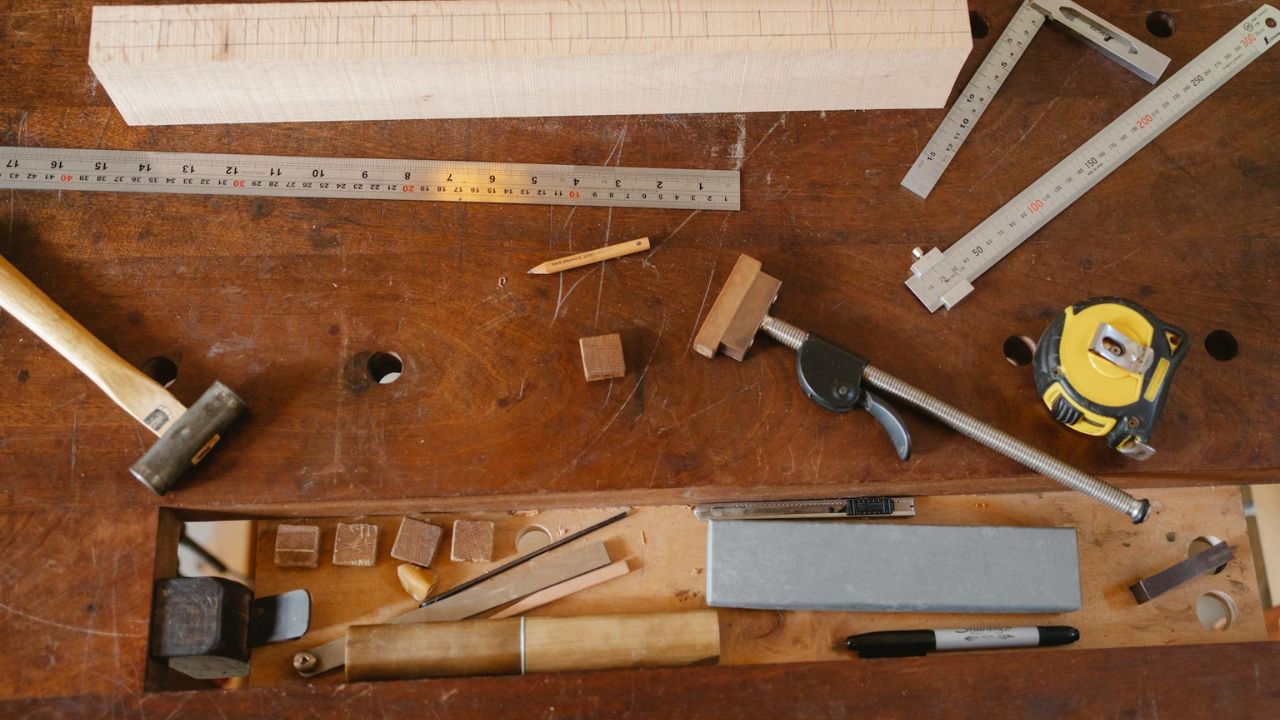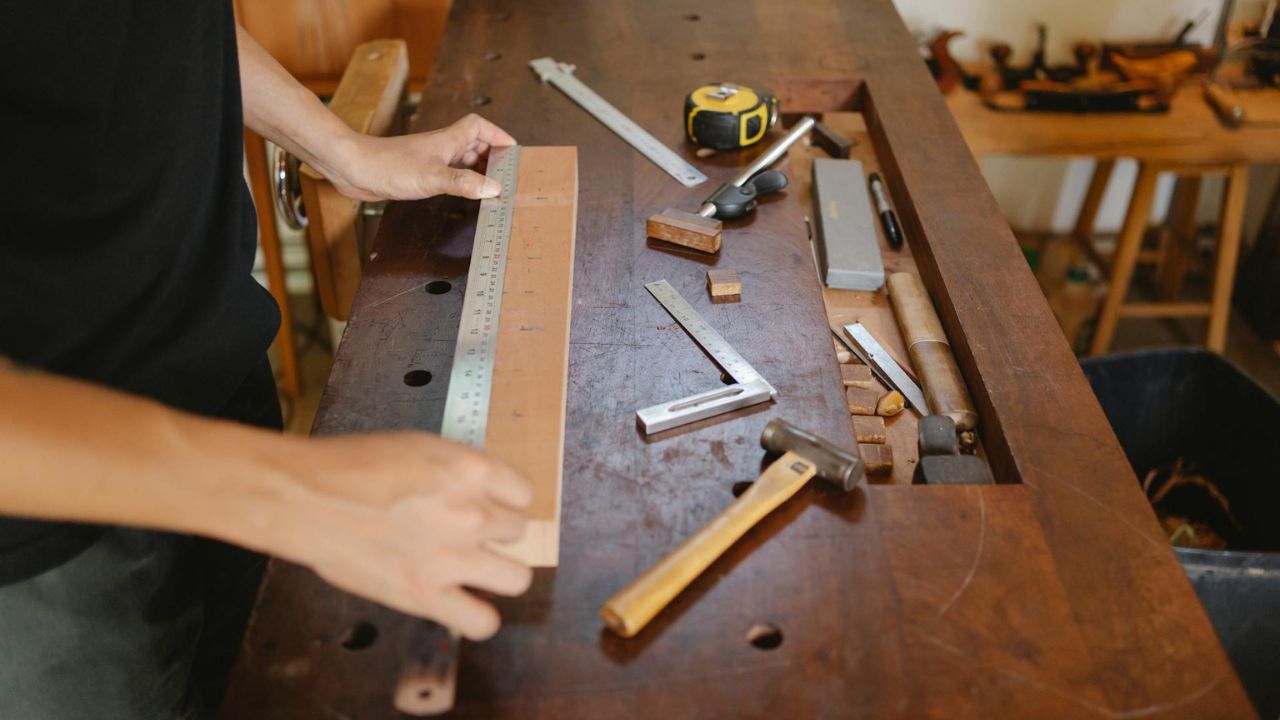Which Tool is Used for Boring Wood? A Complete Guide to Wood Boring Tools and Techniques
Woodworking is the one skill that requires creativity, precision, and the right tool. Of the many varied processes involved in woodworking, the boring of wood-that is, creating holes of various sizes and shapes-is essentially a fundamental skill. Knowing the tools and techniques of boring wood can make all the difference in your projects, be it for a DIY enthusiast or a professional carpenter. In this detailed tutorial, we consider boring wood tools, their applications, and tips on how to achieve the best results.
Take Your Woodworking to the Next Level! Build 16,000 Woodworking Projects With Step-By-Step Plans
What is Wood Boring?
Wood boring refers to the making of holes in wood for several purposes, such as joining, installing hardware, or making some decorative elements. The quality of a hole, considering precision, smoothness, and finish, will depend on the tool and method applied. From small pilot holes up to large diameter openings, wood boring finds its essential place in furniture making, construction, and DIY projects.
Types of Tools for Boring Wood

1. Twist Drill Bits
Twist drill bits are the most common all-purpose tools used in boring woods. They are in a cylindrical shape and contain spiral flutes carrying the woods while it spins. These perform well when creating small and medium-sized holes and also happens to be among those most frequently used for pilot holes and general purposes.
- Best for: Softwoods, hardwoods, and composite materials.
- Tip: Use a center punch or awl for preventing the bit to wander off course.
In case you are looking for good-quality twist drill bits, then check out this recommended product.
2. Spade Bits
Spade bits are designed to drill larger holes more quickly. They have a flat, spade-like appearance with a pointed tip, which is great for quickly positioning them. They also tend to be extremely fast but will leave the edges of the hole a little rough-so they are more suitable for construction jobs rather than fine woodworking.
- Best for: Drilling holes for wiring, plumbing, or rough carpentry.
3. Brad Point Bits
Brad point bits are precision tools designed for clean, accurate holes. They feature a sharp center point that resists wandering and two cutting spurs that create smooth edges. These bits are ideal for dowel joinery and other tasks requiring high precision.
- Best for: Hardwoods, softwoods, and projects requiring clean finishes.
For a reliable set of brad point bits, consider this excellent option.
4. Auger Bits
Auger bits are designed to cut deep, clean holes in thick wood. They have a screw-like point and are tipped by pulling the bit into the material. This allows them to work very well in applications such as drilling post and beam holes.
- Best for: Deep holes in hardwoods and softwoods.
5. Forstner Bits
Forstner bits remain the best choices to make flat-bottomed holes, overlapping holes, or holes at an angle. They are most used in cabinetry and furniture making to install hinges and to create decorative inlays.
- Best for: Precision woodworking, flat-bottomed holes.
6. Hole Saws
Hole saws are used to make large diameter holes such as for pipes or recessed lighting. They feature a cylindrical saw blade with a pilot bit in the center. They work very quickly, but tend to tear out the back side of the material.
- Best for: Wood, drywall, and other materials.
7. Self-Feed Bits
Self-feed bits resemble auger and Forstner bits but with a screw-like tip that pulls the bit through the wood. They are ideal for fast, clean holes in construction and remodeling projects.
- Best for: Contractors and remodelers.
Take Your Woodworking to the Next Level! Build 16,000 Woodworking Projects With Step-By-Step Plans
How to Choose the Right Tool for Your Project

A number of factors dictate the best tool to select:
- Type of Wood: Softwoods take less aggressive bits, whereas hardwoods require tough, sharp tools.
- Hole Size and Depth: The smaller holes can easily be made by the twist or brad point bits, while the larger holes will want either spade bits or hole saws.
- Finish Quality: If the holes should be clean and accurate, select a brad point or Forstner bit.
- Project Requirements: Consider the intended use of this hole – joinery, hardware installation, simple cosmetic.
For different wood boring tool options, check out this store here.
Basic Safety and Efficiency Tips During Wood Boring
- Use the Right Speed: The speed should be adjusted depending on the wood type and bit. Higher speeds work for softwoods, while lower speeds are appropriate for hardwoods.
- Secure the Wood: Use clamps or a vice to hold the wood in place from movement during drilling.
- Regularly Remove Debris: Clear the wood chips to prevent heating up and to provide a smooth drilling process.
- Safety Equipment: Safety glasses, a dust mask, and ear protection are always worn when performing the operation.
- Practice on Scrap Wood: Try your tools and techniques on scrap wood before creating your final piece.
Advanced Techniques for Boring in Wood
1. Countersinking
Countersinking basically provides a conical recess at the mouth of a hole for screws so that they could be set below the surface. The application of countersinking is crucial to every professional look of the woodworking project.
2. Pocket Hole Joinery
The joining of wood pieces by pocket hole joinery is among the quickest and most effective. It involves the use of special pocket hole drill bits with a jig in making angled holes for screws.
3. Overlapping Holes
Forstner bits are ideal to make overlapping holes, very helpful in decorative woodwork and cabinetry.
Care for Your Wood Boring Tools
Good maintenance will give extra life to the tools and optimize performance:
- Sharpen Bits Regularly: Dull bits can cause splintering and burning. Use a sharpening stone or professional service.
- Clean After Use: Remove wood residue and apply a light coat of oil to prevent rust.
- Store Properly: Store bits in a nice case or holder so they do not get damaged.
For some great maintenance tools, see this recommended product.
Conclusion
Boring into wood requires not only the correct tool and technique for the task, but also much attention to detail. From doing small holes with twist drill bits to more critical applications with Forstner bits, understanding the strong and weak points of each tool is key to enabling you to obtain professional results in all your wood boring assignments. You should feel confident taking on any wood-boring project, with the help of these tips and techniques presented in this guide.
Take Your Woodworking to the Next Level! Build 16,000 Woodworking Projects With Step-By-Step Plans
Can You Make Money Selling Woodworking Projects?
What Woodworking Project is Most Profitable?
How to Make Money Fast with Woodworking?
What is the Highest Paid Woodworker?
Is Woodworking a Good Business to Start
What is the Best Platform to Sell Woodworking Projects?
How to Sell Wooden Items Online?
Woodworking Related Topics And Tags: wood boring tools, best tools for boring wood, how to bore wood, woodworking tools, DIY wood boring techniques, Forstner bits vs spade bits, woodworking tips and tricks, hole saws for wood, brad point bits for woodworking, wood boring guide
